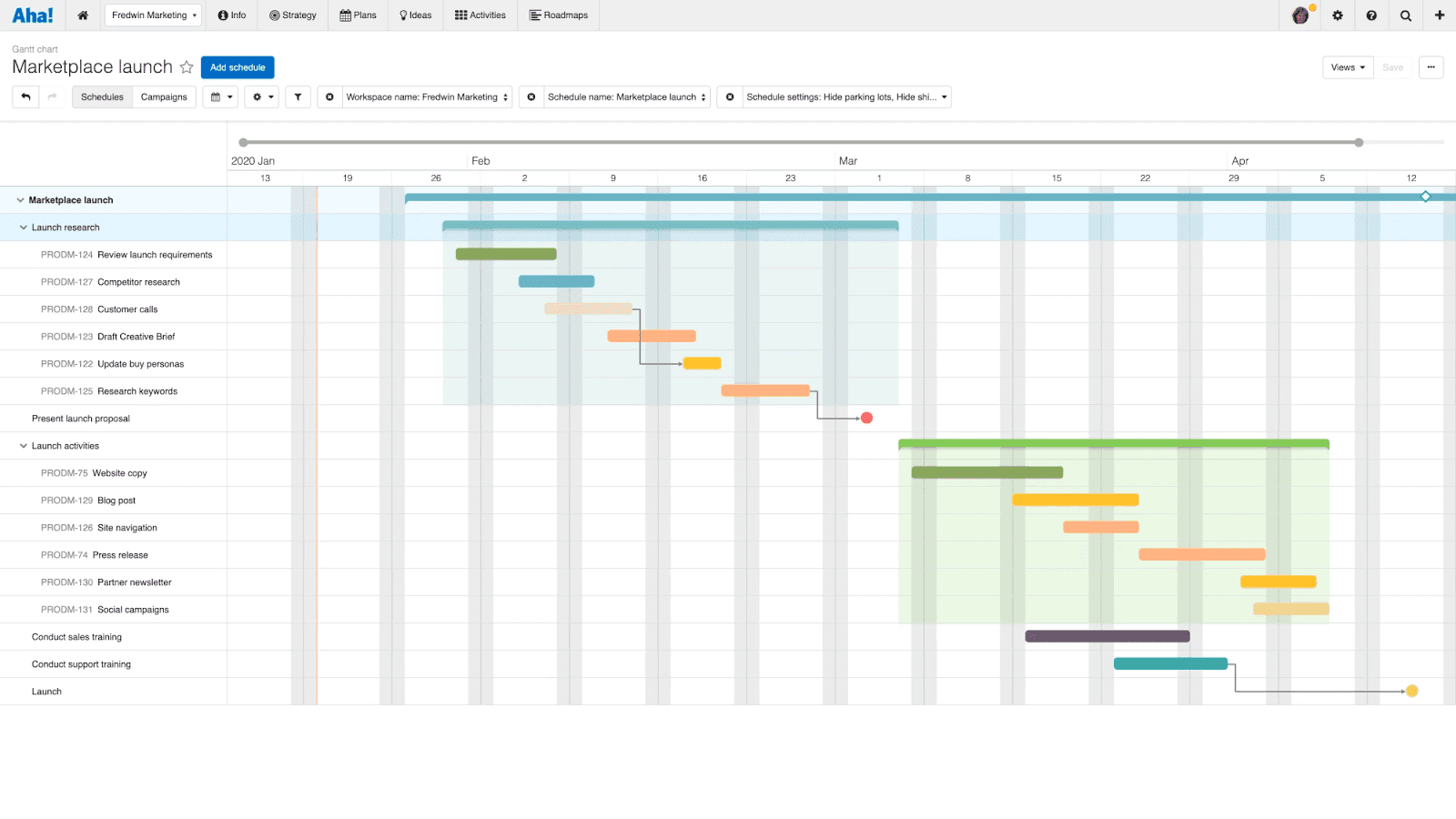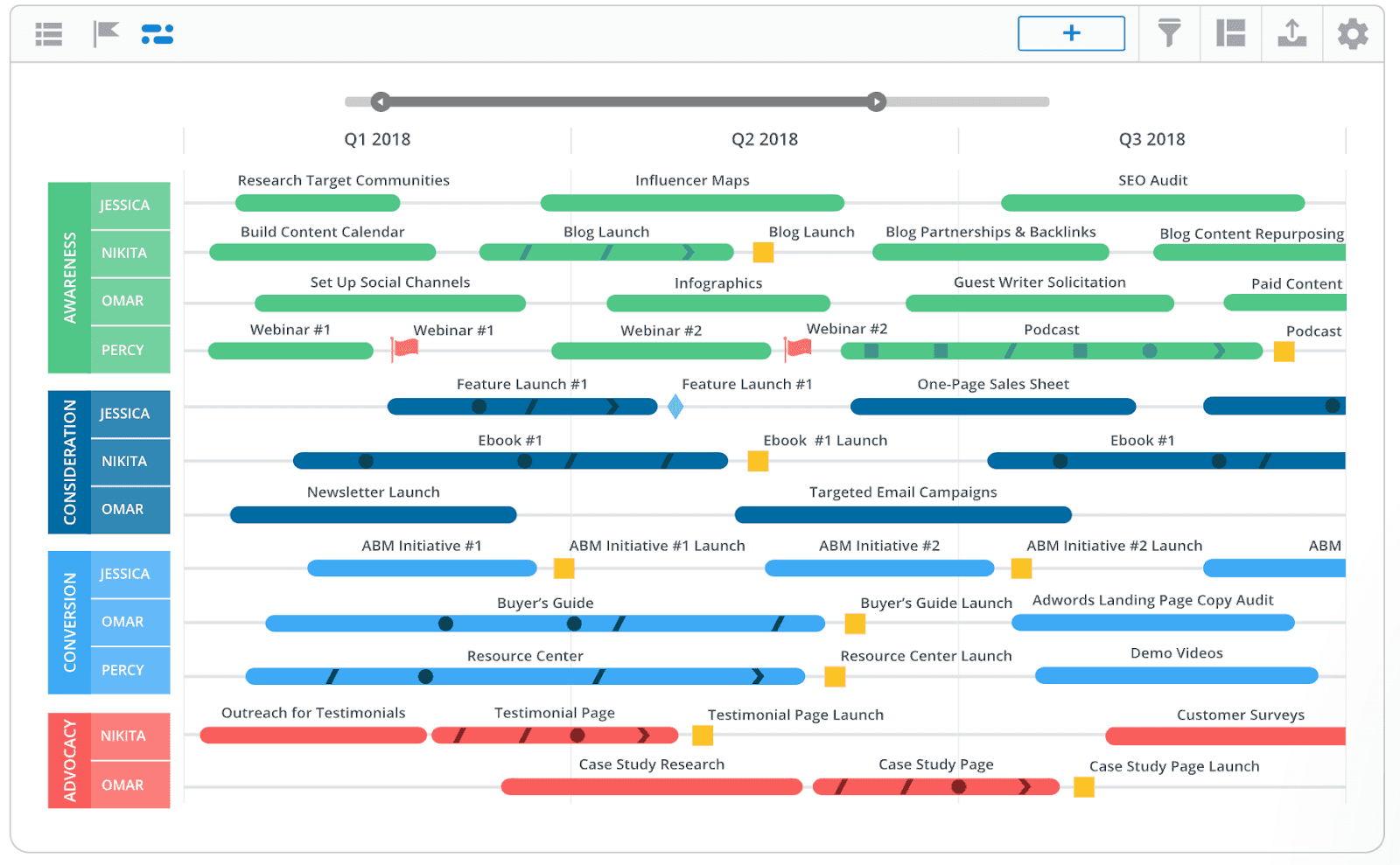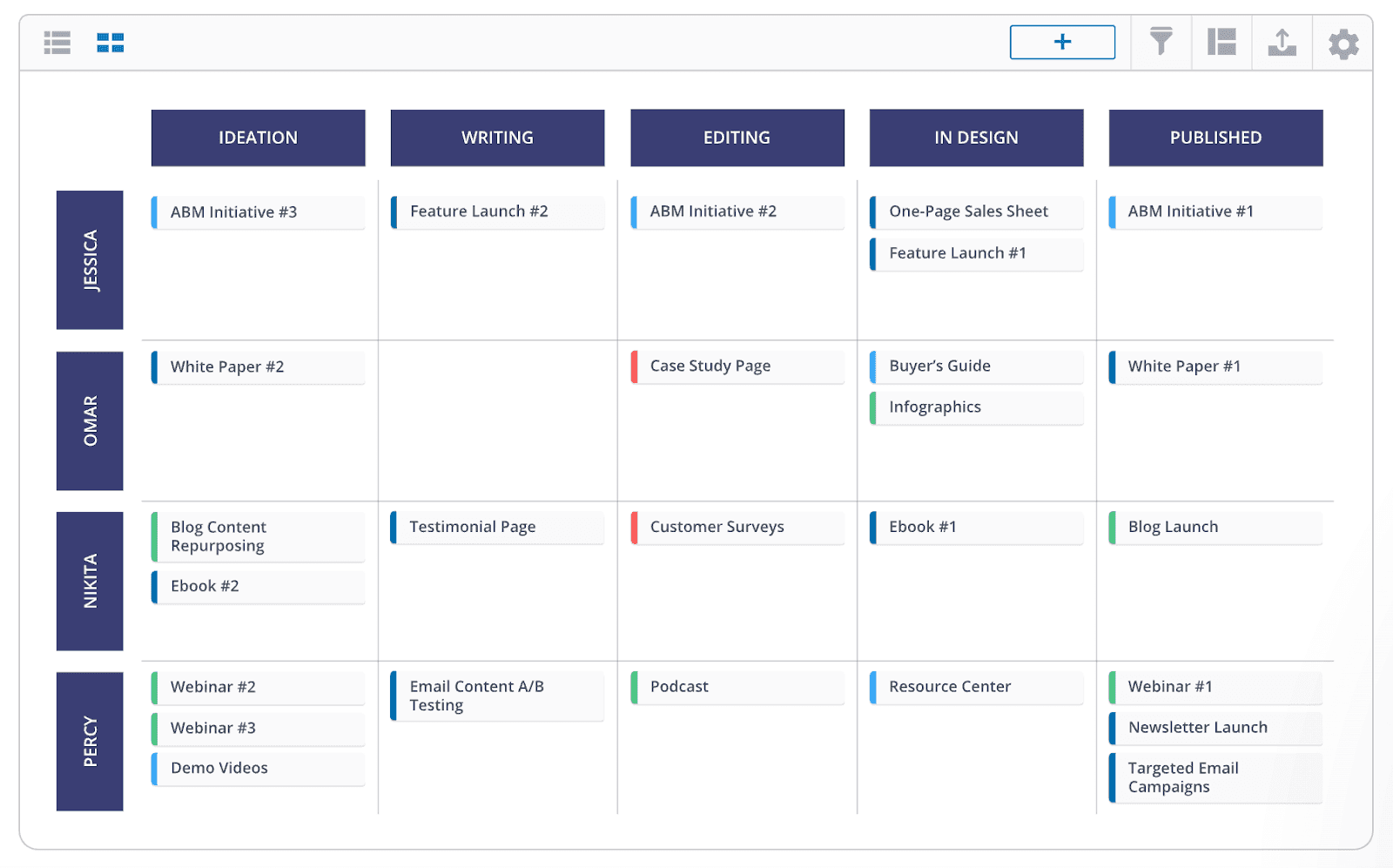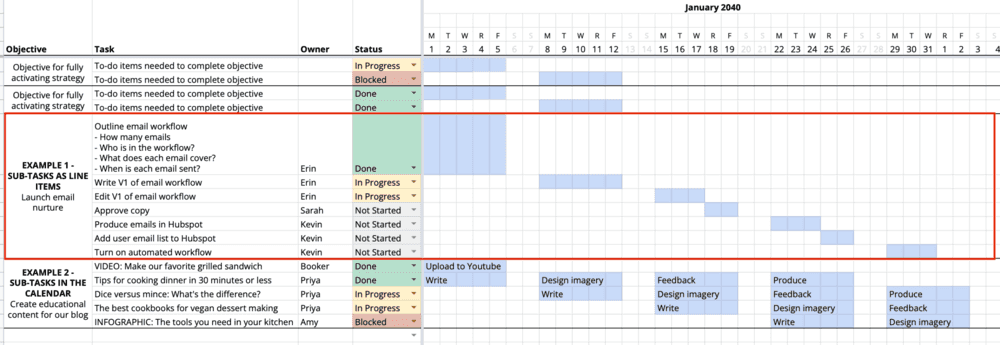A content roadmap is a vital content marketing asset for executing your strategy. Like a traditional roadmap, content roadmaps show where you hope to be and how you’d get there.
Serving as a single source of truth, it provides a detailed overview of the governance, operations, and tactics for creating multiple pieces of content. This empowers your team to know important information about every content they create and when to expect them.
When you’re done reading this post, you’ll understand:
- What a content roadmap is
- Why a content roadmap is essential
- How to plan your content roadmap
Plus, with the examples and templates included below, you can get started with creating your content roadmap immediately.
What Is A Content Roadmap?
A content roadmap breaks down a campaign or initiative into step-by-step timelines for completing content projects. For instance, it can include information about when to expect the first draft, visuals, final draft, and distribution assets of an article.
Content roadmaps consider the milestones, steps, tasks, contributors, handoffs, dependencies, timelines, and deadlines required to complete content projects accurately and on time.
Why Is A Content Roadmap Important?
A content roadmap is important because it:
- Ensures a clearly defined plan with visibility for all stakeholders
- Defines constraints with clear expectations
- Enables everyone to know when work is on track
- Empowers the team to celebrate wins continuously
- Helps teams meet deadlines
Ensures A Clearly Defined Plan With Visibility For All Stakeholders
A content roadmap lets stakeholders understand where you are and where you want to be. It saves everyone time navigating multiple documents and allows all involved to see the plan for executing your strategy.
Recommended Reading: The Ultimate Guide to Content Review: Best Practices and Strategies
Defines Constraints With Clear Expectations
Every content project has risks that can cause delays. With a content roadmap, you can easily identify bottlenecks, define constraints, set up mitigation procedures, and have clear expectations. This lets contributors know how much time they may dedicate to a project.
Enables Everyone To Know When Work Is On Track
Maps help you see if you’re driving in the right direction— content roadmaps do the same thing. They enable everyone to understand if work is in progress, know if things are on track, identify potential blockers quickly, fix blockers, and ensure there’s no lapse in the timely execution of your content marketing strategy.
Empowers The Team To Celebrate Wins Continuously
Every project has many milestones before they finish. A content roadmap identifies these milestones and empowers your team to celebrate their wins throughout the project instead of at the end. This keeps everyone in high spirits and lets your team members support each other.
Helps Teams Meet Deadlines
A content roadmap helps you have clear deadlines for every project. Deadlines ensure your team members have their eyes on the ball, making it easier for them to stay focused, on track, and have greater efficiency.
How should you create a content roadmap? What are the steps to create a content roadmap? Here are 5 steps to plan a content roadmap:
5 Steps to Create a Content Roadmap
- Set Milestones
- Break Down Steps & Tasks
- Establish Timeframes
- Understand Handoff Dependencies
- Determine Contributors
Step 1: Set Milestones
Project milestones are like signposts. They help your team to avoid getting sidetracked or losing focus. Milestones function as checkpoints on your project timeline, letting you track the stage of projects and how far they are from completion.
They can also provide a sense of accomplishment for your team. This will keep morale high and motivate them to continue working hard.
Using a Marketing Roadmap tool like CoSchedule’s Marketing Suite makes setting milestones much easier.
Step 2: Break Down Steps & Tasks For Each Milestone
Breaking down your milestone into steps and tasks lets you get a full view of what you need to complete a project. While you can create checklist-based roadmaps with tools like spreadsheets, they don’t allow you to collaborate with your team.
This is where products like the CoSchedule Marketing Suite shine. Besides the drag-and-drop templates, which save you time, these checklists help you organize the steps required for every asset, including the team members, progress tracking, and deadlines.

Step 3: Establish Timeframes For Completing Each Step
When setting timeframes, ask the stakeholders involved to say how much time they need to execute each step. For instance, the time a writer needs to create the first draft of a B2B blog post might be more than the time required to write a social post.
The same applies to the time for creating a video and other assets. Never assume that ‘X’ hours are sufficient for a step in your project. Assumptions can cause your team to push back deadlines, delay deliverables, and mess up your entire roadmap.
Step 4: Understand Step Completion & Handoff Dependencies (Waterfalls)
If the completion of one task relies on a previous task, that’s a dependency. For instance, when creating a blog post:
- Design depends on the availability of a first draft
- Editing depends on the availability of a first draft.
- Publishing depends on the availability of an edited draft.
- Creating social content assets depends on the availability of a final draft.
The list goes on and applies to any written or visual content asset you want to create.
If you’re using the CoSchedule Marketing Suite, each dependency can exist as tasks on the to-do list of a relevant team member. This ensures dependencies do not slip through the cracks and provides a smooth handoff of projects from one team member to the next.
Users of CoSchedule Marketing Suite can also save time by creating reusable checklists with Task Templates. This lets you add a saved checklist to each newly planned piece of content in a few clicks.
Step 5: Determine Who Will Complete Each Step
Knowing who owns a particular step or task in your content roadmap is crucial for establishing clear lines of responsibility and accountability within your team.
When everyone knows what they must do, the odds of a successful execution improve.
Clear ownership of steps and tasks can also streamline communication. You’d know exactly who to contact for progress updates, questions, and feedback, making it easier to keep your projects moving forward and on track.
Content Roadmap Examples
There is no universal example of a content roadmap. Most marketers create their roadmap in spreadsheets and use roadmap software to collaborate and start their content creation process.
Here are five examples of how a content roadmap looks:
Aha! Strategic Content Marketing Roadmap Example Showing Areas Of Investment
Aha! published an example of a content marketing roadmap. Here’s an example from their roadmapping software with a timeline view.
I like the specificity of this example, in that it shows the particular dates when tasks begin and end. This example also shows dependencies well, like how “Customer calls” must be completed before “Update buy personas.”
Roadmunk Content Marketing Roadmap Example
Roadmunk published a content marketing roadmap example screenshot from its roadmapping tool. This is a timeline view example.
This example shows a quarterly view which may make sense for informing stakeholders. However, it is less helpful for detailed planning of steps and tasks. I’m sure Roadmunk’s software allows for more specificity, so these thoughts pertain purely to this example.
Roadmunk also has a feature to view your roadmap in a swimlane view.
This is an interesting example because you can see all the work an individual is responsible for completing. I imagine it would be a solid use case for agile shifting of work from one individual to another when one’s sick or unavoidably absent.
CoSchedule Content Roadmap Example
The marketing team at CoSchedule uses our own product, Marketing Suite, to plan, organize, and execute our content roadmap.
We use three views of this software, all with specific purposes.
First, we use the Idea Board to ideate and prioritize content.
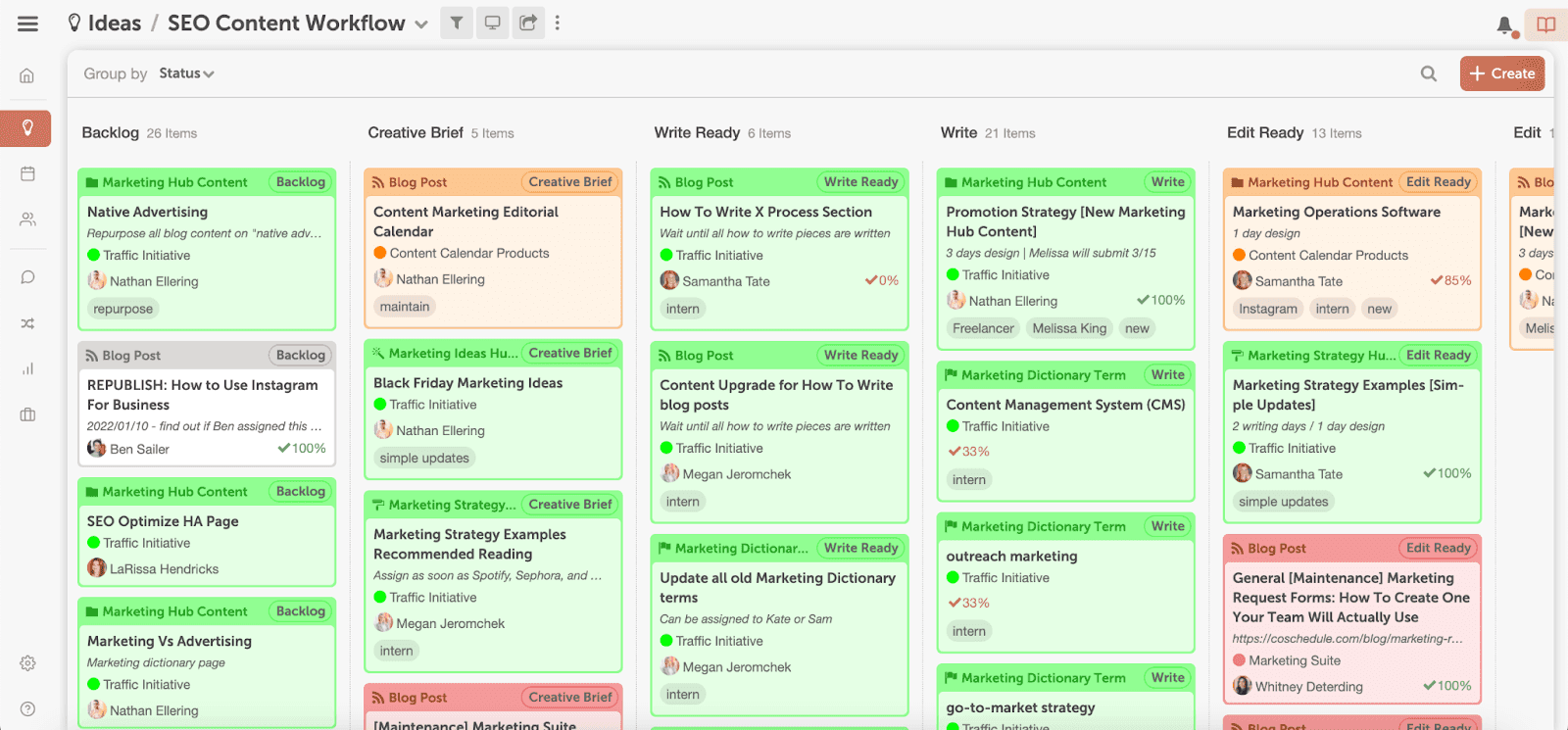
Idea Board is a kanban view that lets us create columns as project statuses. Backlog is where we triage and prioritize. From there, we work through the entire project step by step with these columns:
- Creative Brief (strategy)
- Write Ready
- Write
- Edit Ready
- Edit
- Design Ready
- Design
- Publish Ready
The ready statuses simply help us streamline project handoffs among multiple teams and team members. These statuses ensure projects continue through the content supply chain efficiently, with as little time in ready statuses as possible.
All other statuses mean work is in progress. So when a project is in design, an artist is assigned to complete that work.
Next, we use Team Management Dashboard and its swimlane views to understand individual team member capacity, set expectations, and hold them accountable.
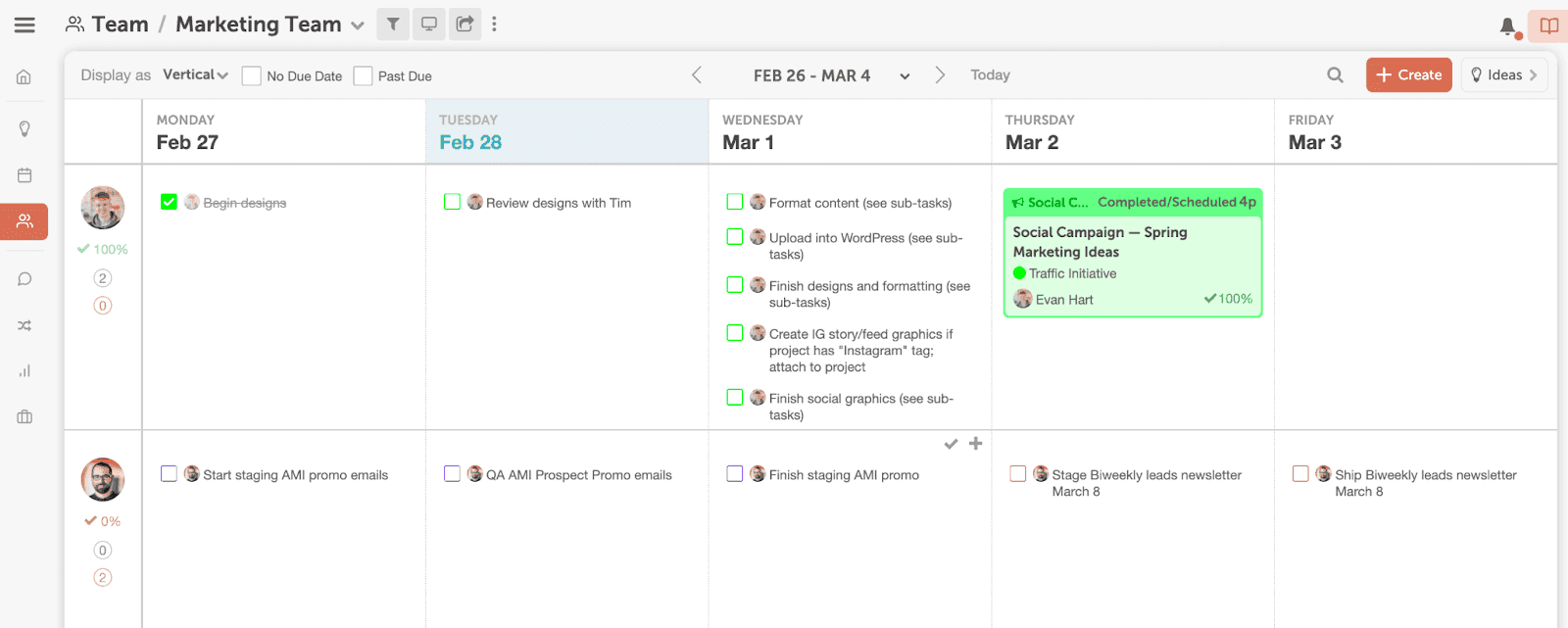
Like the Roadmunk swimlane roadmap example, this Team Management Dashboard view gives us granular insight into who is doing what and when. It lets us shift team resources based on capacity, empowers our morning standup scrum meetings, and helps individuals know exactly what to do every day.
Finally, we use Marketing Suite’s Calendar Organizer view to see all finished work on a beautiful, user-friendly content calendar.
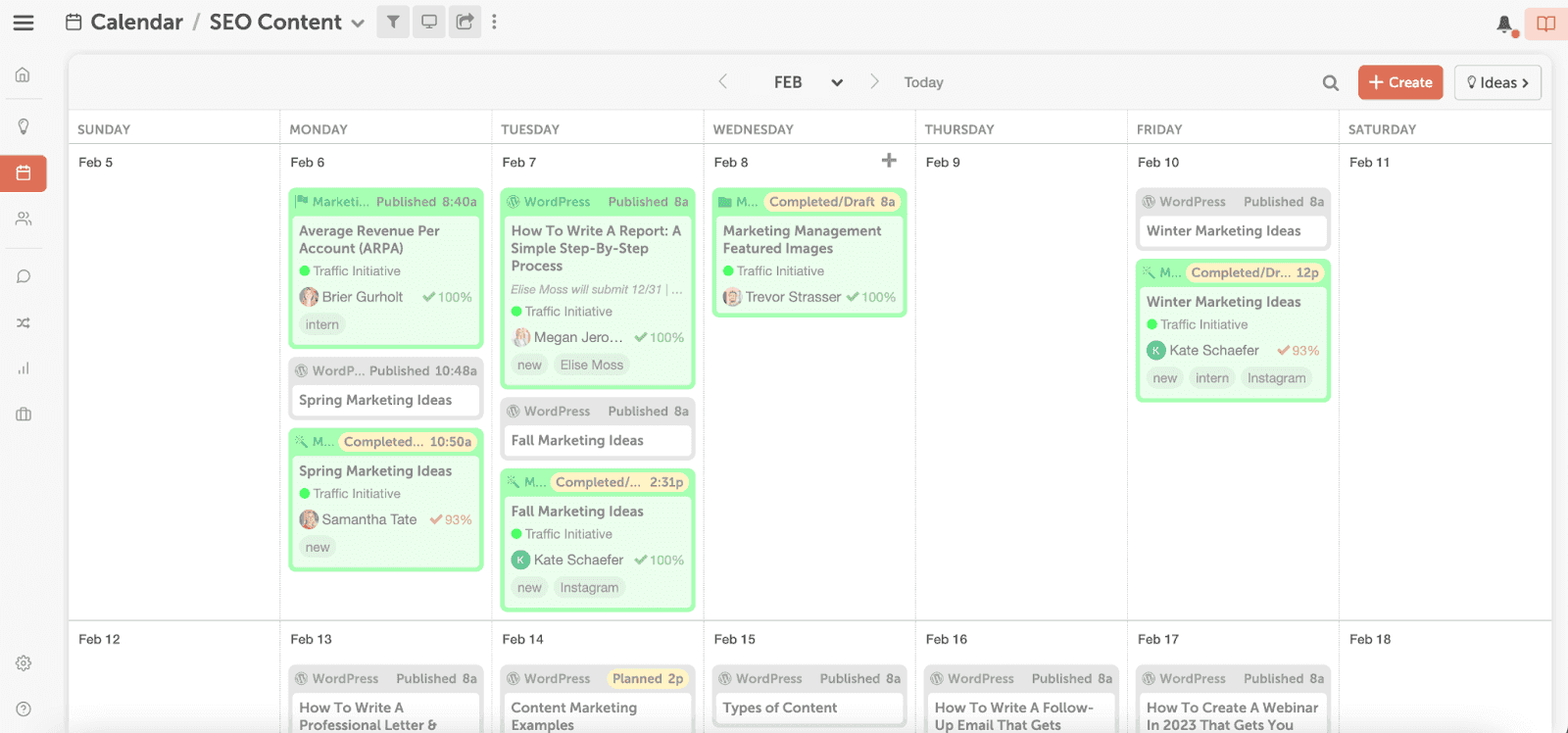
This view is great to see how our content roadmap became actual live published content. Stakeholders get visibility, practitioners get to celebrate their accomplishments, and you essentially help everyone be happy. Win, win, win!
Canva Content Roadmap Example
Canva empowers its users to design roadmaps, which you could use for planning your content.
I like this Canva example because it helps marketers think of work in terms of sprints. While simple, you could add as much detail as needed into a slide like this. The downside is that the roadmap may be too simplistic when you provide minimal details or overly complex if you have lots of tasks for each sprint.
Adrienne Smith Content Roadmap Example
Adrienne Smith publishes kits in which a content roadmap is available as a spreadsheet download.
I like this example because it’s very detailed. Adrienne misses no detail here. She follows best practices for the specificity of task definitions, ownership of those tasks, work-in-process statuses, and the timeframes to complete each work. It’s beautiful!
How Do I Create A Content Roadmap?
Before creating a content roadmap, you need a content strategy. Creating a roadmap without a strategy is like driving a car without tires. That’s because a content strategy provides the guardrail that ensures your content roadmap is productive and meets your goals and KPIs. Here are some steps to create a content roadmap:
- Develop a content strategy with clear goals and KPIs
- Create an editorial calendar that shows content assets to expect on specific dates
- Set up your tasks in a roadmap software like the CoSchedule Marketing Suite to begin the content creation process. Each task should include its aim, name, owner, and status.
What Should A Good Content Roadmap Include?
A good content roadmap should include steps, tasks, goals, task names, owners, statuses, dependencies, handoffs, timelines, and deadlines.

